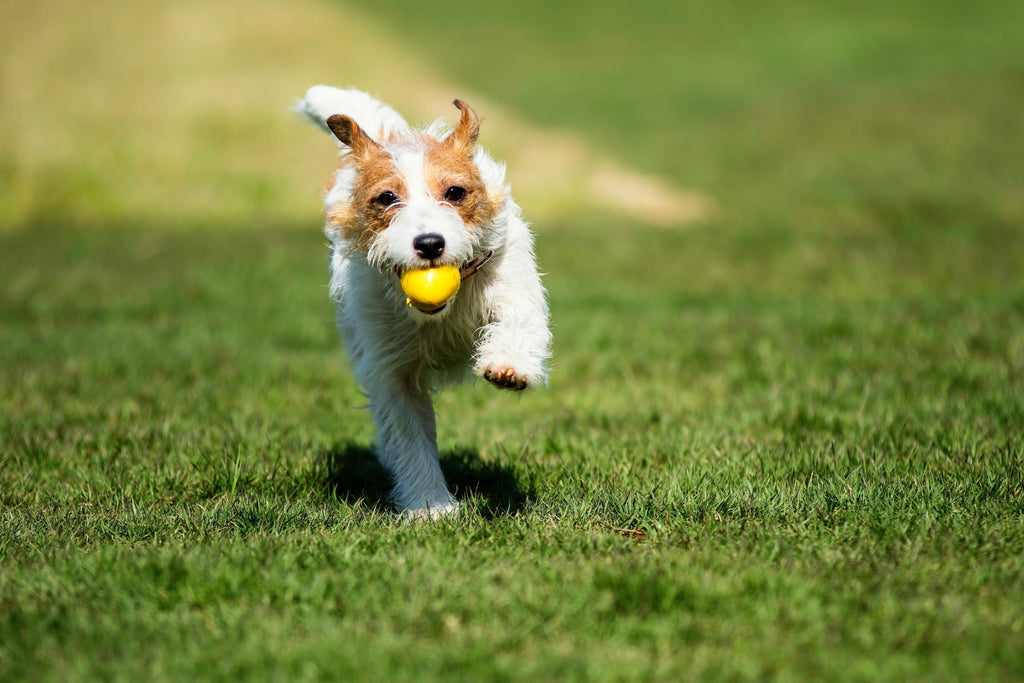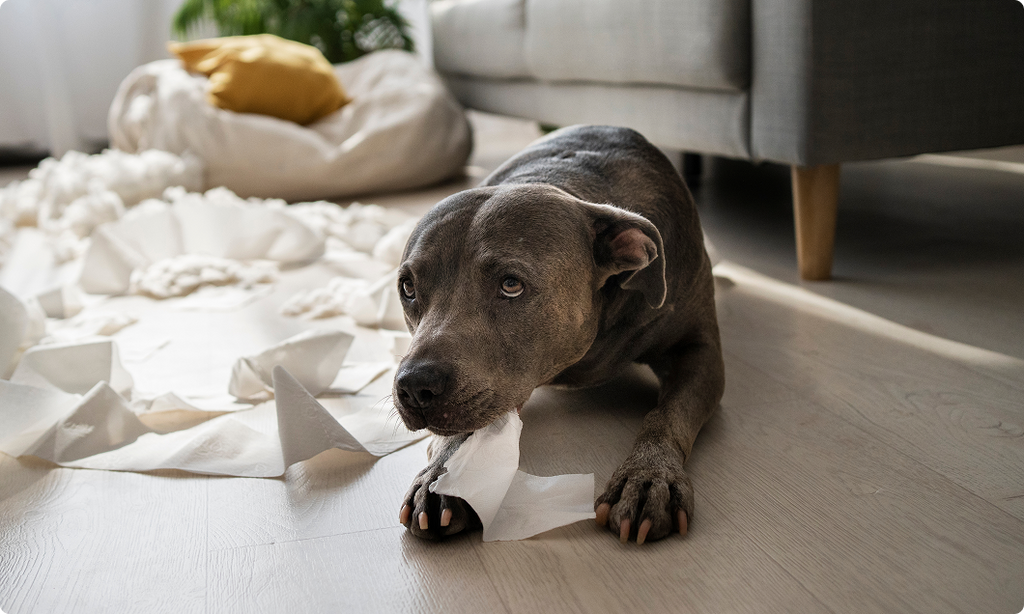The Benefits of Low Sodium Dog Food

Dogs need sodium, but do they need all the sodium that is in their current food? Many manufacturers add sodium to enhance the smell and preserve the food, and often dogs get more sodium in their diet than they need.
While high-sodium is bad, too little sodium can also be a problem. How much sodium is necessary? What are the problems that a high-sodium diet causes? What are the benefits of low sodium dog food? Read on to find out.
What is Sodium and why is it important for dog’s
Sodium (Na) is an essential mineral that plays a crucial role in maintaining your dog's overall health.
Sodium helps:
- Regulate blood pressure
- Balance fluids, and support nerve and muscle function.
- Proper transmission of nerve impulses
- Contraction of muscles, including the heart
- Maintaining the right balance of fluids in and out of cells
While sodium is necessary, it's important to ensure your dog gets the right amount—neither too little nor too much. A balanced diet, like a high quality premium dog food, typically provides the necessary sodium levels, keeping your dog healthy and active.
How much Sodium should be in my dog's diet?
According to guidelines from the Association of American Feed Control Officials (AAFCO) there is no maximum levels that sodium levels must be under when developing a food. They only state the minimum to which food must include which is between 0.08%-0.3% depending on their life stage.
For most dogs, this equates to about 100 mg of sodium per 100 kcal of food. However, specific sodium requirements can vary depending on a dog's size, age, activity level, and any existing health conditions.

What is the average amount of sodium in dry dog food?
The average amount of sodium in commercial dog food typically ranges from 0.2% to 0.4% on a dry matter basis which is a healthy and safe level. This range is designed to meet the nutritional needs of most dogs while ensuring they receive an adequate amount of sodium for maintaining essential bodily functions. However, some brands you may see upwards of 0.6% sodium, which can be detrimental to your pets health long term.
Is too much sodium a bad thing?
Some brands you will notice high levels of sodium or salt in the dog food (>0.5%). High sodium levels in dog food can be a clear sign to avoid purchasing that food for your dog. Reasons why high levels of sodium may be included in some dog food:
-
Flavour Enhancement: Sodium, often in the form of salt, enhances the taste of dog food, making it more palatable and encouraging dogs to eat it.
-
Preservation: Sodium acts as a preservative, helping to extend the shelf life of dog food by inhibiting the growth of bacteria and mould. This is particularly important for wet and semi-moist dog foods.
- Ingredient Interactions: Sodium can also interact with other ingredients to stabilize the food's texture and prevent certain nutrients from degrading during processing
Too much sodium in a dog's diet can be harmful. While sodium is essential for various bodily functions, excessive intake can lead to health problems, especially in dogs with pre-existing conditions like heart disease, kidney issues, or hypertension.
High sodium levels can cause:
- Increased thirst
- Increased blood pressure
- Fluid retention
- Strain on the heart and kidney
In severe cases, it can lead to salt poisoning, which can result in symptoms such as vomiting, diarrhoea, tremors, seizures, and even death if not treated promptly.

How can I lower my dogs sodium levels
As long as you are feeding a high quality premium diet, and your dog is in good health, there is no reason you should need to lower your dog's sodium levels. Remember, sodium is a requirement in all dogs diets. That being said, there are a few things you can be mindful of if looking to limit the sodium intake of your dog.
-
Check your dog's food label: Look for sodium levels between 0.2-0.4%. Anything higher you should try to avoid.
-
Avoid Processed Treats: Many dog treats, especially those that are processed or cured (like jerky or deli meats), contain high levels of sodium. Opt for low-sodium treats or make homemade treats with fresh ingredients.
-
Limit Human Food: Avoid giving your dog table scraps or human food, particularly items high in salt like chips, pretzels, or processed meats. Even seemingly healthy human foods like cheese or bread can contain high sodium levels.
-
Consult Your Veterinarian: If your dog has a health condition that requires a low-sodium diet, consult your veterinarian for advice on the best dietary options and how to safely reduce sodium intake.
What are the Benefits of a Low Sodium Diet:
Keeping in mind that sodium is an essential nutritional element in your dogs diet, lowering your dogs sodium intake can be beneficial if it exceeds the daily recommendations.
-
Heart Health: Low sodium diets can help manage and prevent heart disease by reducing the workload on the heart. Excess sodium can cause the body to retain water, which increases blood pressure and puts more strain on the heart.
-
Kidney Health: Reducing sodium intake can be beneficial for dogs with kidney disease. High sodium levels can exacerbate kidney problems by increasing fluid retention and putting additional stress on the kidneys.
-
Reduced Fluid Retention: For dogs with conditions like congestive heart failure or kidney disease, low sodium diets help prevent fluid build-up in the body, which can cause swelling and discomfort.
-
Better Blood Pressure Management: Low sodium diets can help maintain healthy blood pressure levels, reducing the risk of hypertension and associated complications.
- Improved Overall Wellness: For dogs prone to certain health issues, a diet lower in sodium can contribute to their overall well-being and quality of life by managing symptoms and preventing complications.
Are there any breeds that require less sodium in their diet?
While there aren't specific dog breeds that universally require less sodium, certain conditions and health issues might make a low sodium diet more beneficial for individual dogs. Breeds that are prone to certain health conditions might benefit from a lower sodium diet, including:
- Small Breeds: Smaller breeds can sometimes be more prone to heart issues and might benefit from lower sodium diets to manage blood pressure and heart health.
- Dogs with Heart Disease: Breeds predisposed to heart conditions, such as Cavalier King Charles Spaniels or Boxers, might benefit from a diet lower in sodium to help manage heart disease.
- Dogs with Kidney Disease: Any breed with kidney issues, such as those with a predisposition to kidney problems, can benefit from a low sodium diet to support kidney function and reduce fluid retention.
- Senior Dogs: Older dogs, regardless of breed, may experience a range of health issues that could be alleviated by a diet lower in sodium.
Remember, every dog requires sodium in their diet in order for their body to function properly. However, too much of a good thing can be bad! Always check the label, and keep your dog's diet between 200-400 mg of sodium per kilocalorie of food per day!
If you are thinking of changing your dog's diet and lowering your dog's sodium intake, always consult with your veterinarian first.






